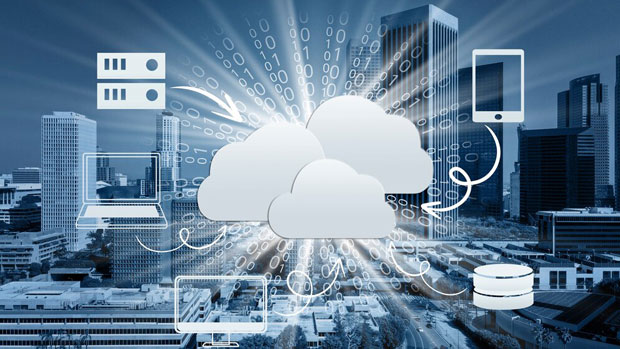Accessing blocked video content has become a significant challenge for internet users worldwide, including those in Indonesia. The practice of circumventing these restrictions raises several legal and security concerns. In this article, we will delve into the legal framework that governs the access of restricted videos in Indonesia, the implications for users, and provide practical security advice. Understanding the implications of these actions is crucial for maintaining both compliance with local laws and ensuring digital safety. Understanding the Legal Landscape of Accessing Blocked Videos in IndonesiaIndonesia, like many other countries, has a regulatory framework aimed at controlling the flow of online content. The government, through agencies such as the Ministry of Communication and Informatics, often blocks access to content deemed inappropriate or harmful to public order. These restrictions can apply to a range of digital media, including videos on various platforms.The legality of accessing blocked videos in Indonesia is primarily shaped by the country’s strict data protection laws and internet governance policies. While some users may consider circumventing these blocks to access restricted content, doing so may inadvertently put them in conflict with local laws. The use of Virtual Private Networks (VPNs), proxies, or other tools to bypass internet restrictions can be considered a violation of Indonesia’s electronic transaction laws, which prohibit unauthorized access to certain online services.Furthermore, accessing blocked content that is classified as illegal, such as pirated media or explicit material, can lead to serious consequences, including legal penalties and potential prosecution. Indonesian authorities have taken action against individuals and organizations involved in the dissemination of illicit digital content, reinforcing the importance of compliance with local regulations.Consequences of Violating Indonesian Cyber LawsViolation of Indonesian cyber laws can result in significant penalties for individuals and entities found guilty. The Electronic Information and Transactions Law (ITE Law) in Indonesia lays out specific punishments for those who engage in unlawful activities online, including accessing or distributing illegal content. For instance, accessing content that is explicitly banned by the government, such as content promoting terrorism or pornography, is punishable by fines and imprisonment.Moreover, even if the content being accessed is not explicitly illegal, users who circumvent government-imposed restrictions using VPNs or other means could face consequences. The ITE Law also mandates that internet service providers (ISPs) comply with government directives to block or restrict access to specific online resources. If users bypass these blocks, they could face legal ramifications, as their actions would be seen as defying government regulations.Practical Security Advice for Indonesian UsersWhile it is important to understand the legal implications of accessing blocked content, ensuring online security is equally crucial. Here are some practical security tips for Indonesian users who wish to access video content safely and securely:1. Use Legitimate ChannelsThe safest way to access content is through legal and authorized channels. Platforms like YouTube, Netflix, and others are regularly updated and regulated, ensuring that the content they provide complies with local laws. Although some videos may be restricted in Indonesia, seeking legal alternatives or subscribing to VPN services that are compliant with local laws can ensure both safety and legality.2. Avoid Illegal Streaming SitesIllegal streaming sites, especially those that provide pirated content, can be a significant threat to security. These sites often contain malware or phishing attempts that can compromise users' personal data. Users should avoid using these sites and opt for platforms that offer licensed content. This not only supports content creators but also helps users avoid the potential risks of malicious software.3. Use Reliable VPN ServicesIf VPN usage is necessary, it is crucial to choose a reliable and secure VPN provider. A good VPN can encrypt your online activities, ensuring your privacy while accessing content. However, users should be aware that VPN usage in Indonesia may be subject to legal scrutiny, and using VPNs for illegal purposes may result in legal consequences.To maximize security, it is essential to select a VPN that has a proven track record of protecting user data and does not store logs of online activities. Additionally, be mindful that while VPNs can help with bypassing geographic restrictions, they cannot shield users from the legal consequences of accessing prohibited content.4. Stay Aware of Data Privacy RisksAccessing content through unverified sources or using unauthorized VPN services can expose users to significant data privacy risks. When users access blocked content, their online activity can be monitored or intercepted, potentially exposing sensitive information. Therefore, it is essential to use trusted and encrypted networks, particularly when browsing or streaming sensitive content.Moreover, Indonesian users should regularly update their security software to protect their devices from viruses, malware, or other threats associated with untrusted online platforms. This is especially important for mobile users, as smartphones can be more vulnerable to malicious attacks.5. Be Cautious of Phishing ScamsIn addition to malware, users who attempt to access blocked videos may become targets of phishing scams. These scams often take the form of fake login pages or pop-ups that trick users into providing personal or financial information. It is essential to stay vigilant and avoid clicking on suspicious links or providing sensitive data on unfamiliar websites.Users should also consider using two-factor authentication (2FA) on their accounts to add an extra layer of security. This can prevent unauthorized access, even if a user’s login credentials are compromised.6. Keep Abreast of Local RegulationsAs the digital landscape continues to evolve, so do the laws and regulations governing internet usage in Indonesia. Users should stay informed about any changes to the ITE Law and other related regulations. By staying up-to-date with local legislation, users can better understand their rights and obligations, ensuring that their actions remain compliant with the law.ConclusionWhile the allure of accessing blocked video content can be strong, Indonesian users must be aware of the potential legal and security risks associated with such actions. It is essential to understand the legal framework that governs online activity, particularly the restrictions on accessing prohibited content. Moreover, ensuring personal and data security while navigating these challenges is paramount. By following legal channels, using reliable security tools, and staying informed about local regulations, users can enjoy a safer online experience while minimizing potential risks. Ultimately, understanding both the legal and security aspects of accessing blocked content is crucial for maintaining compliance with Indonesian laws and protecting oneself in the digital world.
Jul 11, 2025



































































